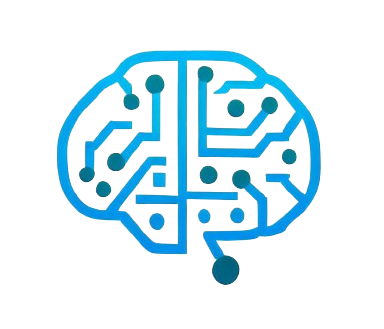The fundamental mechanism behind the KNN algorithm is elegantly straightforward: it is based on the intuitive premise that similar data points can be found within close proximity to one another. This pattern is what the algorithm relies on when predicting the label or value of a new data instance. To find out what group or category this new instance falls into, KNN considers the ‘K’ nearest labeled instances, or neighbors, where ‘K’ is a user-defined constant.
The selection of ‘K’ is pivotal to the algorithm’s performance. A smaller ‘K’ value makes the algorithm sensitive to noise, and the neighborhood may be too specific, reflecting only a tiny fraction of the surrounding data landscape. This can lead to overfitting, where the model captures random fluctuations in the training data that do not represent the true patterns of the underlying population. For example, in classification tasks, a singular outlier in the data could significantly alter the decision boundary for a given point if ‘K’ is too small. Conversely, a larger ‘K’ can smooth out the prediction too much. If ‘K’ encompasses a broad swath of data points, the algorithm might oversimplify the model (underfitting) and miss important nuances in the data. It could erroneously classify new instances by giving undue importance to more distant, less relevant neighbors.
 Distance is the cornerstone of how KNN operates. It uses distance metrics to quantify the similarity between instances. The Euclidean distance, perhaps the most familiar, is akin to measuring a straight line between two points in space. Depending on the data and the context, other distance measures like Manhattan (sum of absolute differences on each dimension) or Hamming distance (for categorical data) can be employed. Each of these metrics has its use-cases and can better capture the structure of the problem at hand.
Distance is the cornerstone of how KNN operates. It uses distance metrics to quantify the similarity between instances. The Euclidean distance, perhaps the most familiar, is akin to measuring a straight line between two points in space. Depending on the data and the context, other distance measures like Manhattan (sum of absolute differences on each dimension) or Hamming distance (for categorical data) can be employed. Each of these metrics has its use-cases and can better capture the structure of the problem at hand.
It’s the non-parametric characteristic of KNN that further adds to its appeal. The model doesn’t assume anything about the form of the relationship between features of the data, which gives it high flexibility when it comes to working with real-world datasets. This aspect of the algorithm is hugely beneficial, considering most real-world data does not follow theoretical statistical distributions.
KNN is categorized as a lazy learner. This term might seem pejorative at first, but in machine learning, it merely denotes that the algorithm does not require a separate phase for learning from the training data. Instead, it holds the entire dataset, and when a prediction is needed, it uses the entire dataset to make a decision. The model’s ‘training’ is the dataset itself, and this allows for the algorithm to adapt immediately as new data comes in. It also means the time taken to make predictions can be much longer as the dataset grows, since the search through the space of all data points becomes more extensive.
Tuning KNN For Optimal Performance
Tuning the KNN algorithm is a delicate process that can significantly impact the model’s effectiveness. It involves several decisions regarding the algorithm’s parameters and the treatment of feature space to ensure optimal classification or regression performance. By addressing these components diligently, a practitioner is more likely to arrive at a KNN model that adeptly navigates the balance between bias and variance, producing reliable and generalizable predictions.
The most critical parameter in KNN is the choice of ‘K’, the number of nearest neighbors considered by the algorithm. There is no one-size-fits-all answer to the best ‘K’ value; it depends heavily on the dataset. A value too low may cause the model to catch the noise within the data, overfitting to the idiosyncrasies present in the training set rather than the overall pattern. However, setting ‘K’ too high might mean that the model becomes overly general, potentially ignoring helpful subtleties that could improve its predictions, resulting in underfitting. To address this issue, practitioners typically take advantage of techniques like cross-validation, where the model is trained and validated with different subsets of the data to assess the performance consistency. Plotting error rates for different ‘K’ values across these folds can help identify a ‘K’ that maintains a balance between adapting to the training data and staying flexible enough to perform well on unseen data.
Distance metric selection is another tuning aspect critical for KNN’s performance. While the Euclidean distance is the conventional choice in many cases because of its geometric intuition as the shortest path between two points, it might not always be the best representation of similarity, especially when dealing with high-dimensional spaces or categorical data. The Manhattan distance, which sums the absolute differences of their coordinates, could be more appropriate for grid-like spatial data or when different dimensions are not equally meaningful. In contrast, the Hamming distance shines when the features are categorical, as it measures the distance between two strings of equal length by counting the number of positions at which the corresponding symbols are different.
The curse of dimensionality can quickly become a problem with KNN as the feature space grows. More dimensions can mean sparser data, making it difficult for the algorithm to identify truly close neighbors. Reducing the dimensionality of the data via methods like Principal Component Analysis (PCA) or t-Distributed Stochastic Neighbor Embedding (t-SNE) can thus be a powerful approach, allowing the model to focus on the most informative aspects of the data while discarding noise and redundant information.
Preprocessing the dataset is also of paramount importance for KNN. Because the algorithm uses distance metrics to determine the proximity of different instances, it is incredibly sensitive to the scale of the features. If features are on different scales, one might disproportionately dominate the distance computation, leading the KNN algorithm astray. Normalizing the dataset, bringing all features onto an equivalent scale, typically either between zero and one or to have mean zero and standard deviation one, ensures that each feature contributes equally to the distance measures and, subsequently, to the model’s predictions.
The underlying distribution of the classes within the dataset may provide yet another challenge for KNN. In the case of imbalanced classes, where some categories are much more common than others, KNN will have a natural bias towards the majority class, potentially overlooking the characteristics of the minority class. Techniques such as resampling the data to balance the representation of each class or altering the weights in the distance calculations can be used to mitigate this bias and improve the model’s sensitivity to less represented classes.
